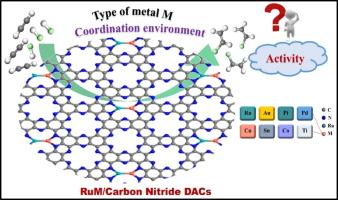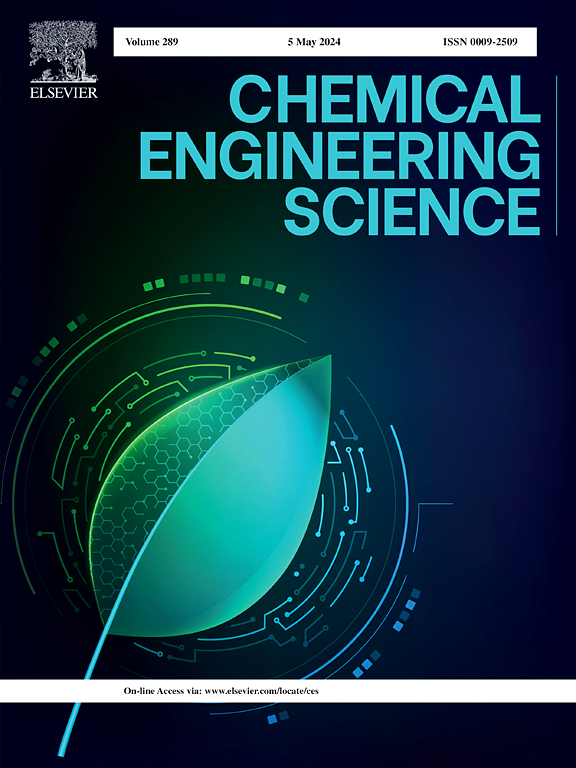C2H2 hydrochlorination over carbon nitride anchored RuM DACs: Changing the type of metal M and its coordination environment to tune catalytic activity
IF 4.1
2区 工程技术
Q2 ENGINEERING, CHEMICAL
引用次数: 0
Abstract
Adjusting the types of diatomic metals and their coordination environments is one of the key strategies to improve catalytic performance of diatomic catalysts (DACs). This work fully examined catalytic activity of C2H2 hydrochlorination over 16 types of DACs consisting of 8 types of metal Ru, Au, Pt, Pd, Cu, Sn, Co and Ti, as well as 2 types of coordination environments C2N and g-C3N4. The results show that the types of diatomic metal and its coordination environment alter C2H2 hydrochlorination route to tune catalytic activity, attributing to that different electron micro-environments lead to different Bader charge transfer and d-band center, and further affect adsorption ability of reactant C2H2. A simple descriptor φ is proposed to qualitatively evaluate catalytic activity. This study provides a theoretical basis and structural information for screening RuM DACs with excellent C2H2 hydrochlorination activity by regulating the types of second metal type and its coordination environments.


求助全文
约1分钟内获得全文
求助全文
来源期刊

Chemical Engineering Science
工程技术-工程:化工
CiteScore
7.50
自引率
8.50%
发文量
1025
审稿时长
50 days
期刊介绍:
Chemical engineering enables the transformation of natural resources and energy into useful products for society. It draws on and applies natural sciences, mathematics and economics, and has developed fundamental engineering science that underpins the discipline.
Chemical Engineering Science (CES) has been publishing papers on the fundamentals of chemical engineering since 1951. CES is the platform where the most significant advances in the discipline have ever since been published. Chemical Engineering Science has accompanied and sustained chemical engineering through its development into the vibrant and broad scientific discipline it is today.
 求助内容:
求助内容: 应助结果提醒方式:
应助结果提醒方式:


